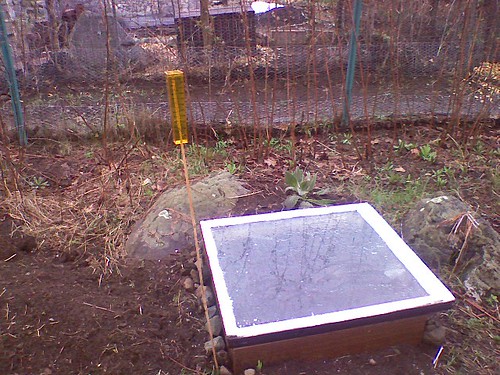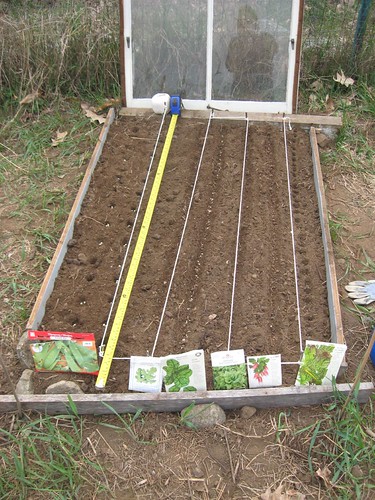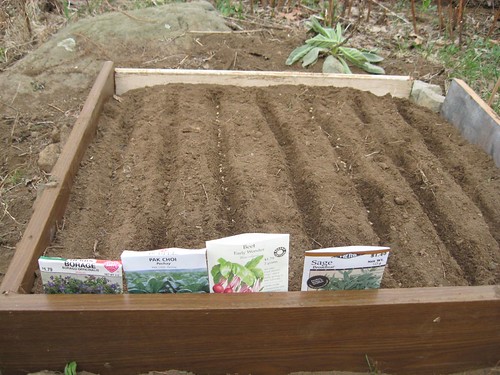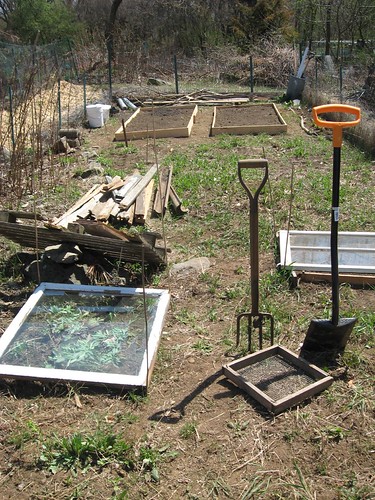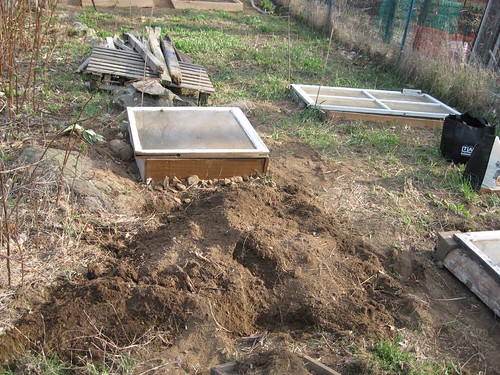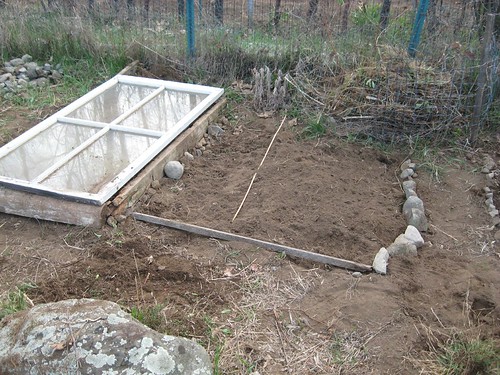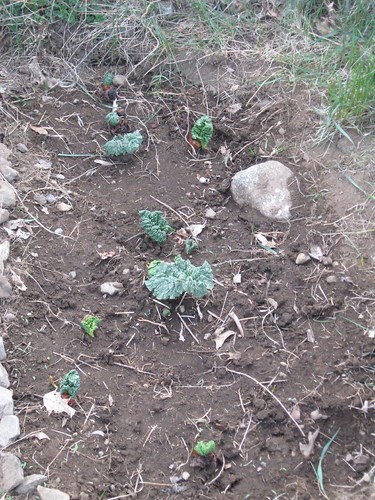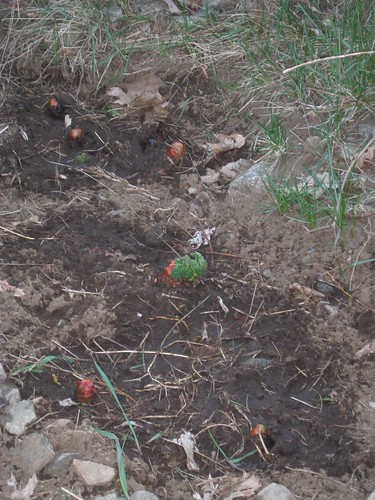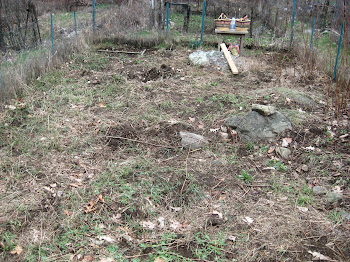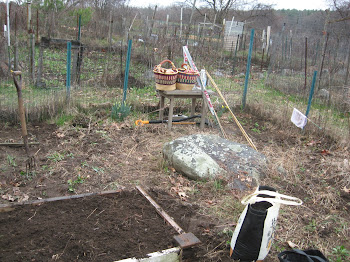She asked about whether it was a difficult transition to go from container gardening (where I get to control the plant's water intake, i.e., not too much or too little) to planting outdoors and therefore being largely subject to rain, and I think that's a valid question. I hadn't given it a whole lot of thought, as such.
In the past, my containers always outside, or on windowsill; in fact, one year they were in full sun all day long on a second-story balcony, so while they avoided bugs to a great degree (yay!) drying out was a major problem: I had to soak them every single evening without fail. In addition, containers are less tolerant of extremes of temperature and moisture: they're smaller (in the sense that they have no access to other water sources - they only have what you give them) and so are more prone to drying up, particularly the clay pots, given that they have more exposed surface area. Likewise, they are vulnerable to the cold - a particular consideration in the exposed position on that second-story balcony I had. My housemates and neighbors thought I was nuts that year; I collected baseball-sized rocks as thermal mass to surround the containers in the early spring (read: February). It worked, but yeah, they thought I was nuts. Until I was eating salads harvested from those pots, so...
So, sun (or lack thereof, in the case of one place I lived) and pests brought in by others (e.g. houseplants from the supermarket bought by a roommate, introduced aphids and whiteflies) were the problems I dealt with, rather than water-control being an advantage.
As for the outdoor garden - so far, I have either lugged jugs of water into the plot, or had access to water spigots (when they got turned on for the season; they were off for the first several weeks). We've had a fair amount of rain recently, so for the immediate future I'm not concerned. I'm also covering the seedlings, and plan on investing in some chickenwire cages to cover my rows, to protect them from the ravages of the woodchuck.
 These nifty ones (picture above) belong to another gardener at my community gardens, and are made of better-quality, more expensive screening (rabbit-fencing?). I think for my purposes chickenwire will do alright.
These nifty ones (picture above) belong to another gardener at my community gardens, and are made of better-quality, more expensive screening (rabbit-fencing?). I think for my purposes chickenwire will do alright.That said, there are in fact a number of community gardens in the area of Boston. the ACGA has a nifty search engine that, if you are an apartment-dweller like me, will help you search, by zipcode, for a garden near you.
I chose this garden because it lies directly along my daily commute to and from work, and is about a mile away from home. Granted, there's a BIG hill between us, but it's not the end of the world. This makes it easier to maintain the garden during the more extreme weather: I had planned all along to stop by in the evenings on my way home and water the plants (with jugs of water, since I haven't invested in a hose). I have a watering can with a decent spout that won't slosh the little seedlings right out of their homes, so... I think I've got it covered.
I guess the answer is, I'm more concerned about the woodchuck and bugs than about the plants drying out during the hot months, or about either too much or too little rain. If it rains too much, I have means to cover the rows and steer the water away (those raised beds plus the storm windows which I can prop up to give them a little shelter). If it rains too little, I plan on watering them regardless. The disadvantages are bugs and other pests, at least so far as I can see at this point.
Later in the season, I'm told that our meadow is a bit of a cold sink, so that factored into my decision to invest in some lumber in the fall to construct a couple cold frames.
I hope that helps clarify some of the factors I considered when I decided to transition from the containers to the garden.

